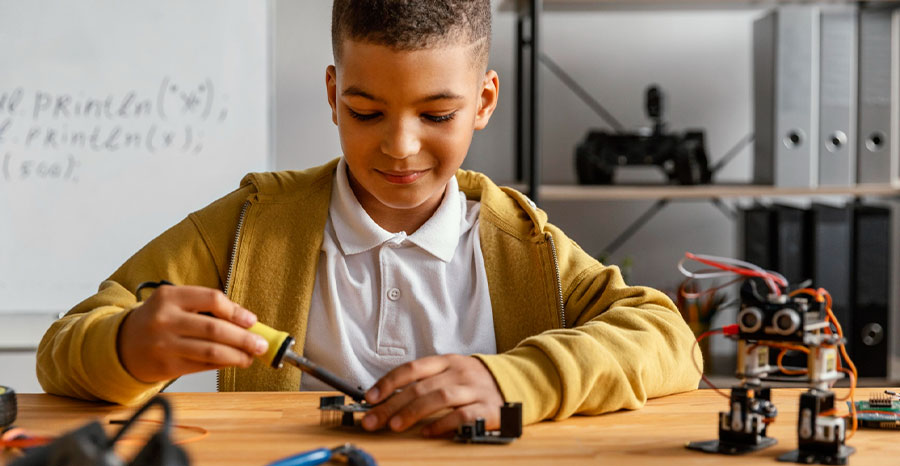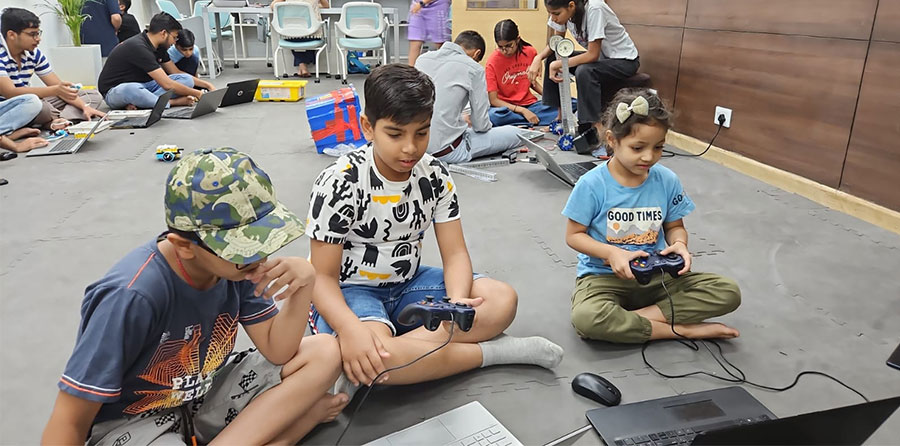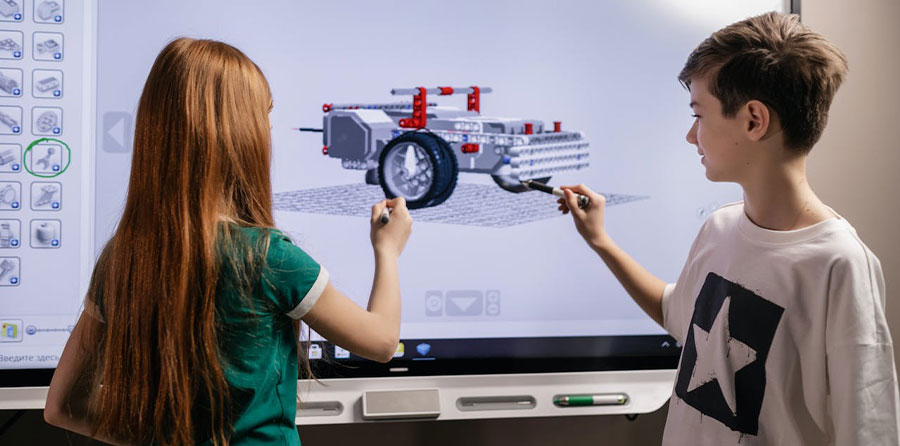What is STEAM Education and why is it important
STEAM Education is an innovative approach to teaching and learning that combines five essential disciplines, namely science, technology, engineering, the arts, and mathematics. The primary objective of STEAM education is to provide students with a holistic and engaging learning experience that fosters critical thinking, problem-solving, creativity, and collaboration.
STEAM education always approaches their students to dwell into the correct dimension of education for their better future. The structure promotes cross-disciplinary learning, which conjugates students to make connections between seemingly unrelated subjects. By integrating the arts into STEAM education, students can express their creativity and develop their aesthetic sense, which is essential for a basic rooted and well-rounded education.
What is STEAM Education?
The term STEAM for education Acquires itself a five basic but diplomatic dimension by which students can grab a good arrangement in which science, technology, engineering, arts and mathematics. It aims to provide students with a comprehensive understanding of how these subjects are interconnected and how they can be used together to solve real-world problems.
The STEAM itself has five different arrangements for the students. By grabbing each of them students can easily carve their creativity and analytical skills. This helps them to develop a range of hard and soft skills too such as critical thinking, problem-solving, communication, collaboration, and creativity. They learn to approach problems from different angles and come up with innovative solutions.
In order to ensure that STEAM lessons are effective, they should integrate at least two standards and assessments from among the five disciplines. This ensures that students are gaining a well-rounded education and are able to apply what they have learned across different subjects.
What is the difference between STEAM and STEM
The STEAM and STEM it's like two different parts of a similar segment.. STEM is an acronym for 'Science, Technology, Engineering, and Mathematics' on the other side STEAM for 'Science, Technology, Engineering, Art, and Mathematics'. STEM focuses on developing hard and upgraded skills in science, technology, engineering, and mathematics to drive progress or create new ideas. On the other hand, STEAM curricula integrate both hard and soft skills to solve problems. As per The Conversation, STEAM students use a combination of technical and creative skills to approach and solve real-world issues.
Let us use an example to better understand:
Imagine building a bridge! STEM focuses on the science (strength of materials) and engineering (designing a stable structure) to hold weight. STEAM adds the "A" by encouraging students to think creatively, perhaps designing the bridge with an artistic archway or using music to represent the bridge's load capacity.
Why is STEAM important?
In Today's Era students are likely free to feel. Many of them are not quick on the uptake.Thats why not from STEM but from STEAM the average students can also become an interviewer of 21st-century skills like media and technology literacy, productivity, social skills, communication, flexibility and initiative. which is crucial for ensuring their success in the future.
By incorporating these subjects into the curriculum, STEAM also helps to foster children's innate curiosity and creativity, leading to a more engaging and fulfilling learning experience.
There is a significant gender disparity in STEM fields, particularly in the ratio of female to male. Encouraging more girls to pursue STEAM disciplines is another aspect of this movement.
The implementation of a STEAM framework not only teaches students crucial skills such as critical thinking, problem-solving, and creativity but also ensures their preparedness for high-growth fields.
Even if students don't pursue a career in a STEM or STEAM field, the skills they acquire from a STEAM education can be applied to a wide range of professions. The STEAM framework not only teaches students the subject matter but also instills them with the ability to learn, ask questions, experiment, and create. It emphasizes practical skills that can be applied to future careers and fosters a mindset of continuous learning and innovation.
The future of STEAM Education
The future of STEAM education is very promising. As technology continues to advance at a rapid pace, the demand for individuals with skills in science, technology, engineering, arts, and mathematics will only increase. In the coming years, we can expect to see more emphasis on hands-on learning, project-based curriculum, and interdisciplinary approaches to teaching STEAM subjects. Additionally, as more students gain access to technology and digital resources, online learning platforms and virtual reality experiences will become more prevalent.
The future of STEAM education is bright and full of exciting opportunities for students of all ages and backgrounds to learn and grow. The harmony of Science, Technology, Engineering, Arts, and Mathematics (STEAM) into the curriculum is no longer a novel concept as soon we will see it in the emerging syllabus.
The STEAM Education model and how to implement it
It's all about the dedication and awareness of STEAM. There are many simple ways that can be done as implementation in education methods.The STEAM education model recognizes that the different disciplines are interconnected, and it encourages educators to collaborate across disciplines to create lesson plans and projects that integrate at least two STEAM disciplines. This integration creates a more comprehensive and engaging learning experience for students, helping them develop a range of hard and soft skills that they can apply in a variety of contexts.
To implement the STEAM education model effectively, educators can start by developing a clear understanding of the model and its benefits. Easily steps can be taken by STEAM educators is, adding in Science Club, Involving the Community, Implement Project-Based Learning also Create Field Trips and Work-Based Learning Opportunities and Invest in Technology. This includes understanding the connections between the different disciplines and how they can be integrated to create meaningful learning experiences.
Educators can then work together to create interdisciplinary lesson plans and projects that align with the STEAM model. These projects should be designed to promote creativity, critical thinking, and problem-solving skills, and they should be engaging and relevant to students' lives.
To support STEAM learning, educators can also use technology and other resources, such as maker spaces, to provide students with hands-on, inquiry-based learning experiences. These experiences should emphasis creativity and critical thinking, and they should allow students to explore different STEAM disciplines in a meaningful way.
Educators should assess student learning using a variety of methods, such as project-based assessments, performance-based assessments, and conventional assessments. This allows educators to evaluate student progress and adjust their teaching strategies as needed.
By implementing the STEAM education model, educators can help their students develop the skills they need to succeed in the 21st-century workforce and beyond. This includes skills such as critical thinking, collaboration, problem-solving, creativity, and adaptability, which are essential for success in a rapidly changing world.

Have queries?
Contact us anytime.




